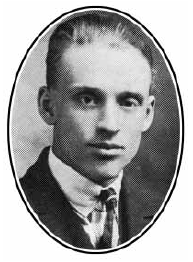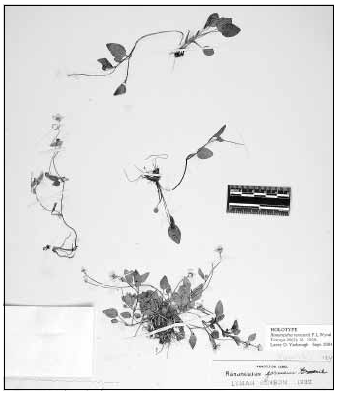The Botanists at Crater Lake National Park by Elizabeth L. Horn
Kalmiopsis Volume 12, 2005 31
***previous*** — ***next***
Early Interpreters and a Park Flora: F. Lyle Wynd
 F. Lyle Wynd high school graduation photograph, 1923, from Eugene High School Yearbook. Courtesy of Lane County Historical Museum, Eugene, OR
F. Lyle Wynd high school graduation photograph, 1923, from Eugene High School Yearbook. Courtesy of Lane County Historical Museum, Eugene, OR
Wynd (1904-1987) spent his youth at Fort Klamath, only ten miles from the Park’s boundary and became enthralled with Crater Lake. He was only 18 when he started working there as a ranger naturalist (Love 2002). Between 1923 and 1930 he collected extensively, and six years later he published the first “Flora of Crater Lake National Park” (Wynd 1936), which listed 433 species (Zika 2003). He personally collected all but three of the listed specimens, indicating his intimacy with the Park’s flora. His specimens became part of the University of Oregon Herbarium (now housed at Oregon State University).
Wynd worked with C. Hart Merriam and was intrigued with the concept of Life Zones, which recognized that plant and animal species occur in latitudinal and altitudinal zones. Wynd went beyond finding and listing plants to describe how plants grouped together in communities; thus expanding botanical knowledge at CLNP to include habitats and vegetation patterns. He adapted Merriam’s concept to describe three Life Zones in the Park. By increasing elevation these were 1) the Transition Zone, indicated by ponderosa pine (Pinus ponderosa) occurring mostly in the southeastern and northeastern corners of the park and interspersed with moist canyons, open slopes and meadows; 2) the Canadian Zone where forest cover is primarily lodgepole pine (P. contorta) and western white pine (P. monticola), from about 5,500 ft. elevation up to the Hudsonian Zone; and 3) the Hudsonian Zone, which includes forests of mountain hemlock (Tsuga mertensiana) and whitebark pine (Pinus albicaulis) on ridges (Wynd 1941). Within the Canadian Zone, diversity is contributed by environments such as streamsides, pumice flats (the Pumice Desert), and islands (Wizard Island and Phantom Ship). Comparable variation in the Hudsonian Zone is found in open pumice slopes around the rim, streamsides, talus slopes, and wet areas. Herbarium sheet of Wynd’s holotype forRanunculus terrestris collected at Red Blanket Creek, CLNP. Lyman Benson annotated the specimen as Ranunulus gormanii Greene in 1932.
Herbarium sheet of Wynd’s holotype forRanunculus terrestris collected at Red Blanket Creek, CLNP. Lyman Benson annotated the specimen as Ranunulus gormanii Greene in 1932.
***previous*** — ***next***

